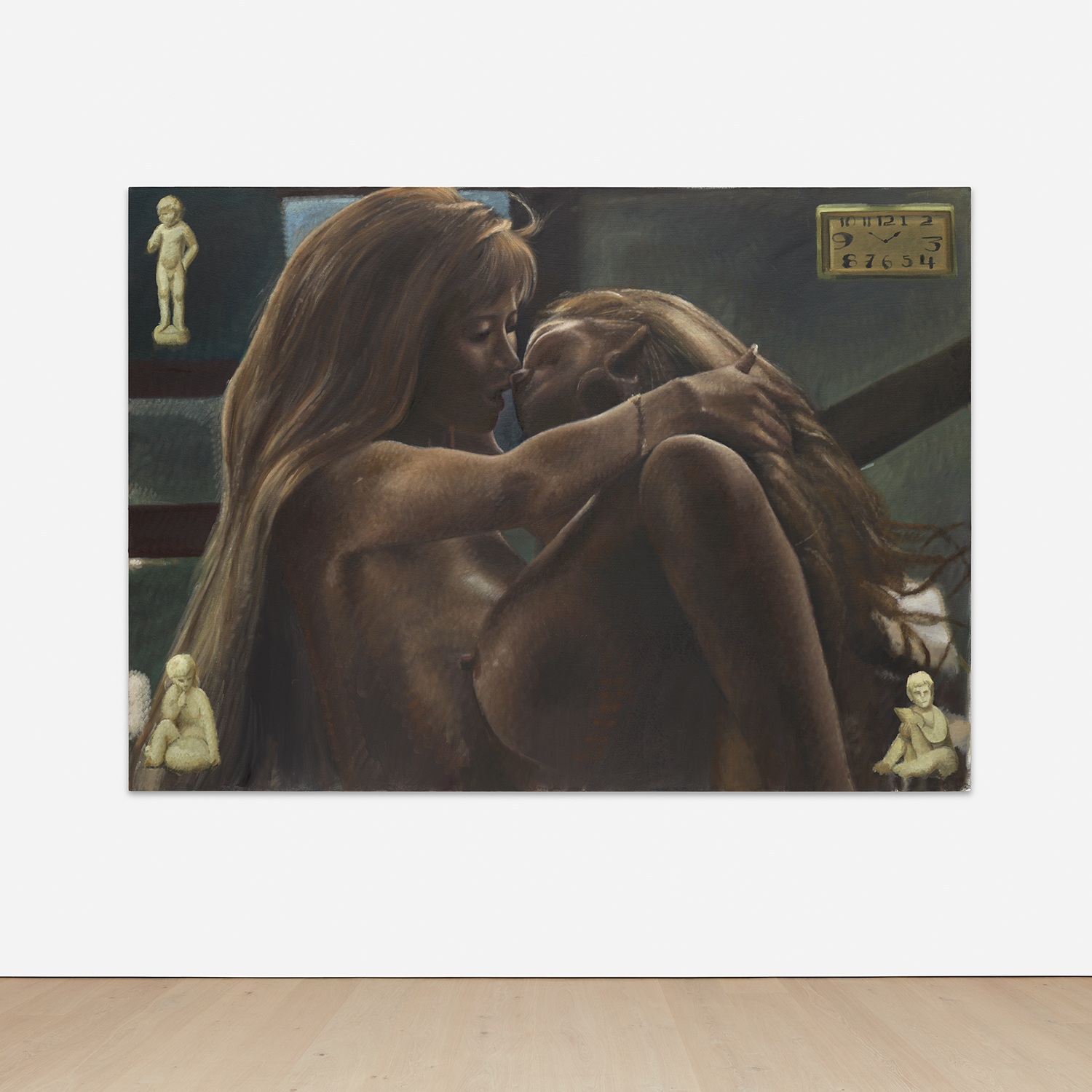

331
Issy Wood
Study for the Bada Bing
- Estimate
- $120,000 - 150,000
Further Details
Study for the Bada Bing, 2021, comes from a small group of works Issy Wood made featuring scenes inspired by the television series The Sopranos. The title references the fictional Bada Bing! strip club that served as a key location throughout the series and popularized the phrase in the general lexicon. While Wood typically paints inanimate objects of desire—cars, antiques, coats—she here turns to figures engaged in a sensual act, marking an important evolution of her work’s themes of allure and fetishization.
Wood’s uncanny work frames her central figures with four antique objects: three porcelain statuettes of young boys and an Art Deco clock. Floating in the corners of the composition, these elements add a Surrealist bent to the work and prevent a purely sexual read of the women’s image. With close cropping Wood removes her figures from context, providing only seemingly unconnected objects that disrupt any straightforward narrative. Her choice of items introduces themes of consumption, innocence and time. Wood, who is also a prolific musician, featured a similar clock in the painting that served as cover art to her 2022 album My Body Your Choice. Since 2021, the clock has become a frequent motif in Wood’s work, often anchoring a corner of her compositions in a prominent memento mori.
“What does ‘from life’ even mean in this day and age?”
—Issy Wood
Study for the Bada Bing also astutely comments on impulses for consumption, be it buying trinkets, bingeing television or engaging in sexual acts. The distinguishing haziness with which Wood renders her painting adds to the subjects’ aura while also preventing their tangibility. This additionally relates to how Wood sources her painting’s imagery, which comes from secondary sources like auction catalogues or, in the present case, television scenes. The simulated texture is reminiscent of the artist’s earlier works on velvet and the result is a remembered, dreamlike quality that prevents viewers from clearly grasping at the subjects—a quality Barry Schwabsky now-famously coined “perverted realism” writing about the artist in Artforum.i Rendering perhaps familiar people and objects just strangely enough, Wood amplifies the oddity of the mundane.
i Barry Schwabsky, “Issy Wood,” Artforum, April 2020, online